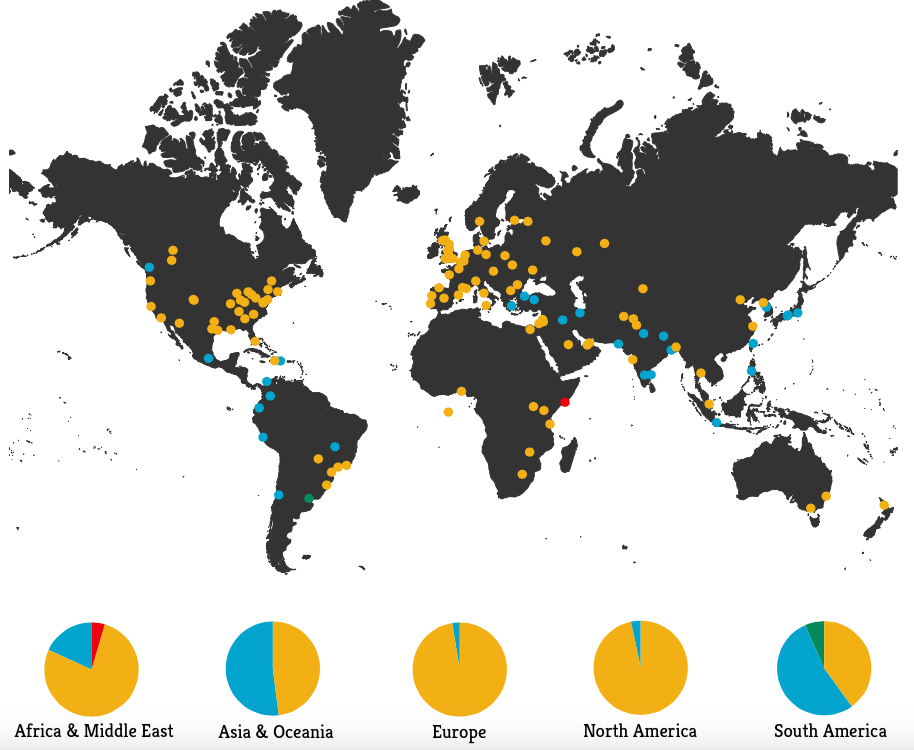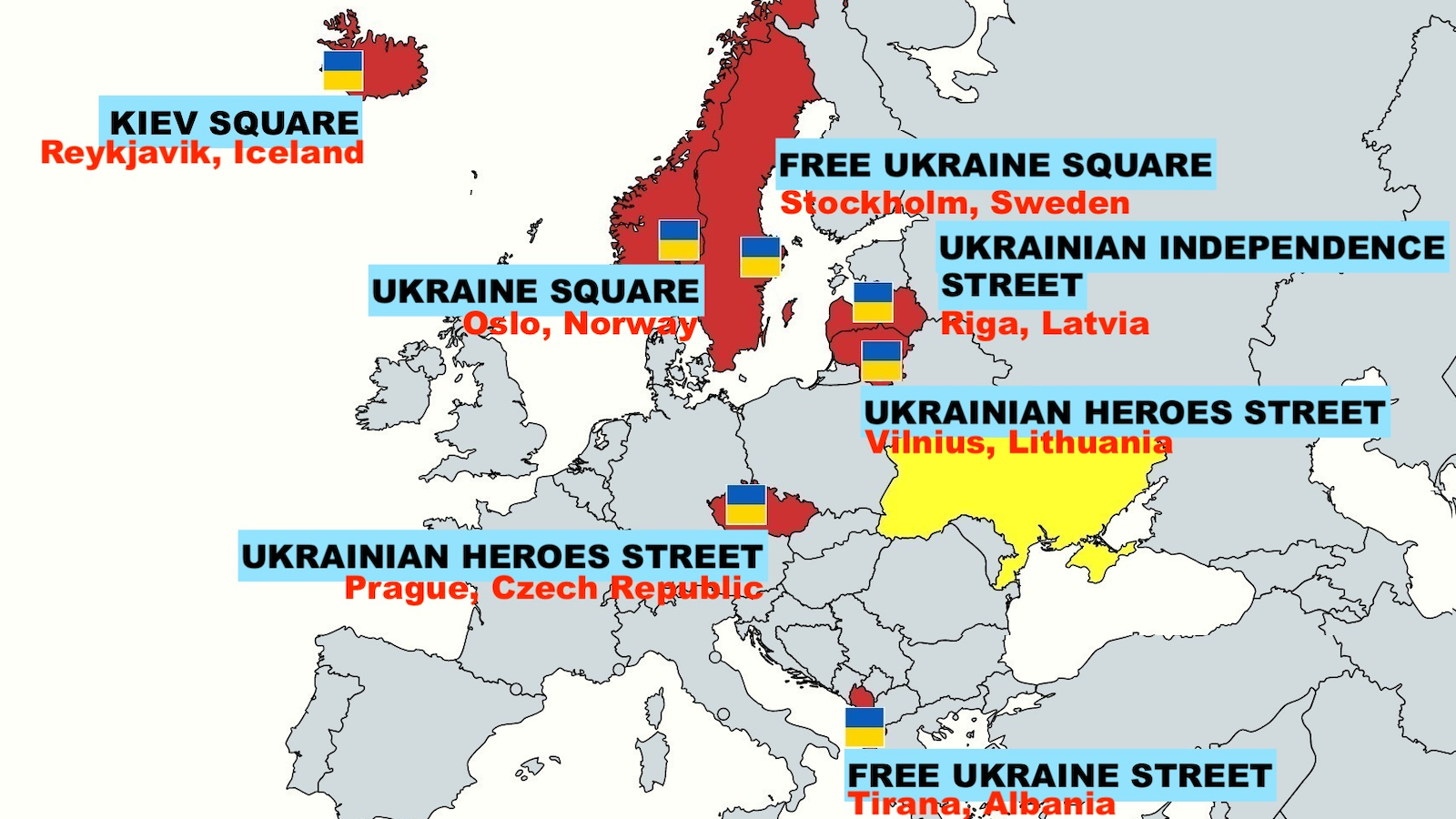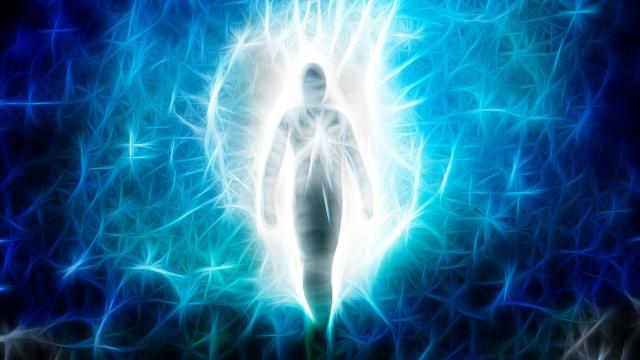Turns out most famous people aren’t that famous at all
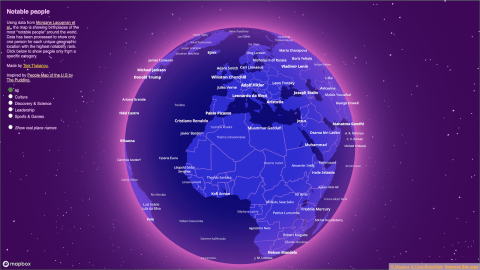
- Replace the name of each city or town with that of the most famous person born there, and you get this “globe of notability.”
- At the hemispherical level, we still recognize most of the names. But as we zoom in, it turns out many famous people are just not that well known.
- You can blame the rate of fame oblivion, which is about 12.5% per century, as calculated by the scientists who compiled a new database of 2.29 million “notables” throughout history.
This is the world map our celebrity-obsessed culture deserves: gone are the names of cities and towns — in their place are the names of the entertainers, politicians, athletes, and other notables that were born there.
What the map also shows, however, is that celebrity is a rather elastic concept. Each locality is labelled with the name of that place’s most famous daughter or son. In many, if not most, cases, it’s someone you’ve never heard of.
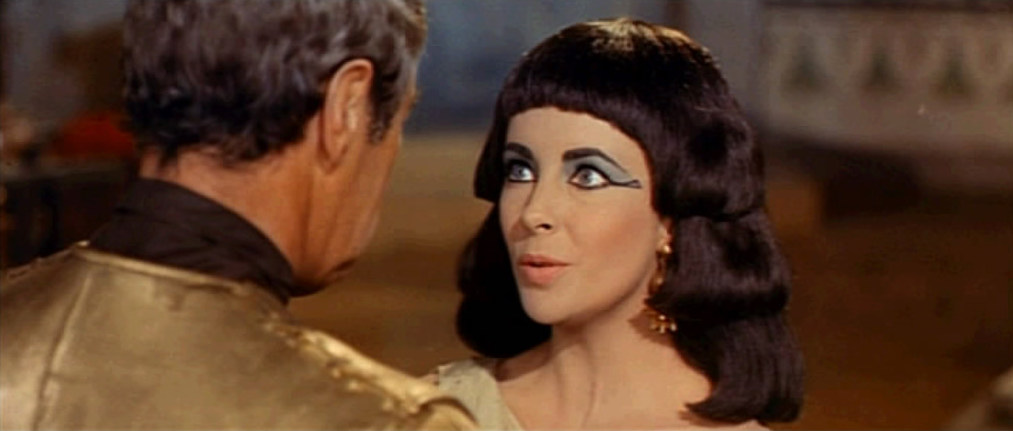
But let’s start at the planetary level, where there’s only room for the most famous names. On the globe you can see Lenin, Hitler, Churchill, and Da Vinci on one hemisphere, and Bob Dylan, Donald Trump, Marilyn Monroe, and Frida Kahlo on the other.
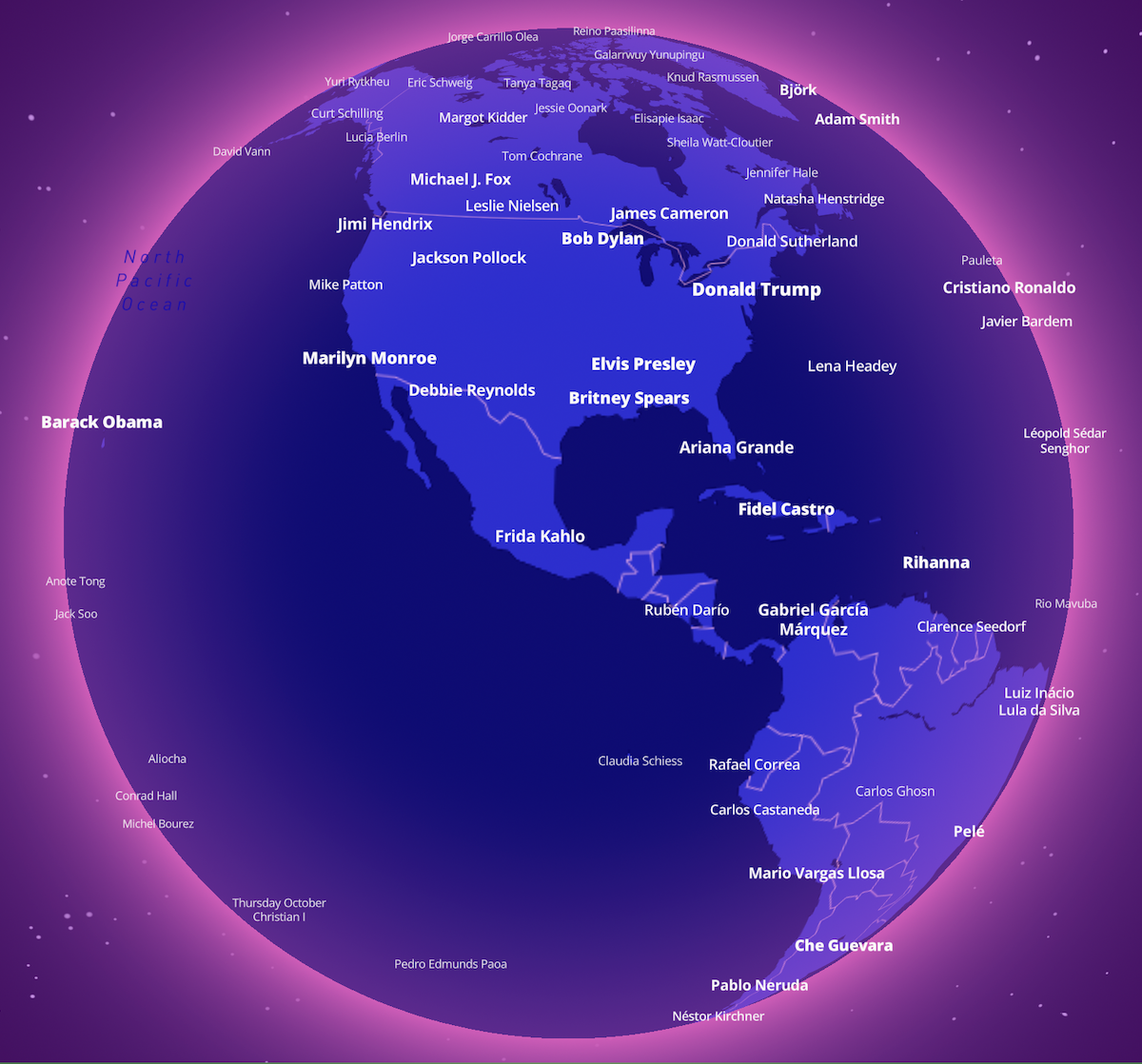
As you zoom in closer to the ground, many of the names start to conform to Sam Malone’s definition of his own stardom: “Not many people may know this, but I’m actually quite famous.”
Not only is the landscape of the famous paradoxically strewn with the names of the not-so-famous, but also the names we do recognize are jarringly juxtaposed.
We often think of fame in various silos: politicians, entertainers, athletes, academics, etc. Each belongs to an era and an area, and rarely do their presences overlap, intermingle, or cross over.

But look at a map of, say, Washington state, and some unexpected correspondences become apparent. Here are the birthplaces of Kurt Cobain, Bing Crosby, and Jimi Hendrix — three global musical stars, each in different times and genres, yet born so close to each other. It’s reminiscent of those two neighboring houses in London, in which Jimi Hendrix and George Friedrich Händel lived next door to each other, just in separate centuries.
Or take this map of the Rhine valley in Germany, showing how Charles Bukowski, the poet laureate of skid row, was born just downriver from Valéry Giscard d’Estaing, the president of France from 1974 to 1981. A bit father downstream is the birthplace of Ludwig van Beethoven, who occasionally pops up in the former’s poetry.
Somewhat farther east lie another pair of odd bedfellows: Sigmund Freud and Pope John Paul II. If that’s not unlikely enough, in between both is Billy Wilder, director of the cross-dressing comedy caper Some Like It Hot (1959).
Sometimes, the centuries melt away to reveal the serendipity of natal proximity. Surely, if the fact that Attila and Stalin were born within a stone’s throw of each other is merely a cosmic coincidence, then at least it is grimly appropriate.
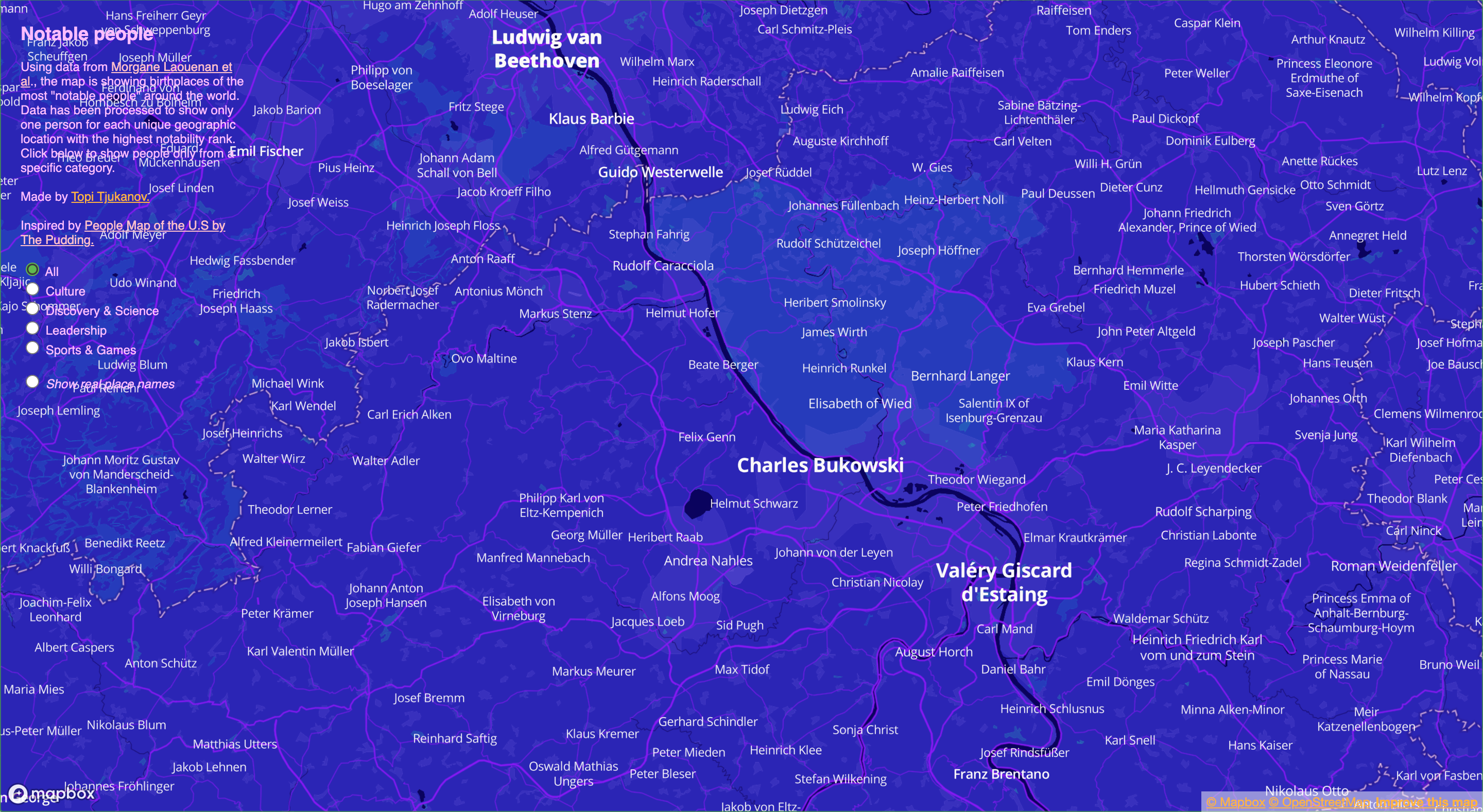
But how do you determine who’s notable enough to be on the map? As it turns out, “notability” can be quantified, and the globe was made from the most advanced database of famous people currently available.
Famous individuals have been listed in literature as early as the Epic of Gilgamesh (2000 BC). Now, we have something called the “digital humanities”: statistical analyses of mountains of digitized data on notable individuals.
An early example was Pantheon 1.0, “a manually verified dataset of globally famous biographies.” Compiled in 2016, it included the 11,341 biographies that were at that time present in more than 25 languages on Wikipedia.
In June 2022, a team of scientists led by Morgane Laouenan published “A cross-verified database of notable people, 3500 BC – 2018 AD,” which formed the basis of this map. Using entries on people listed on Wikipedia and Wikidata, the team compiled a database containing 2.29 million individuals, “an elite 1/43,000th of all human beings that have ever lived.” To counter the Anglo-Saxon bias, 30% of the total comes from six non-English editions of Wikipedia.
What was the point of such a database, exactly? “Thanks to its time and spatial coverage and its granularity, (this database) is suited to explore gender differences, demography, urban development, cultural transmission, human capital, growth, institutions,” the authors of the database noted in their article in Scientific Data.
To measure the relative influence of each individual, they are ranked in a “notability index,” with a score based, among other criteria, on the number of Wikipedia articles for each individual, the total number of words in those articles combined, and the number of times those articles were viewed over a certain period.

The database is a goldmine for social scientists, with plenty of stories to tell. Using the notability index, the researchers compiled lists of the 10 most renowned individuals per period and gender.
- Among the most notable females were: Cleopatra (d. before 500 AD), Joan of Arc (501-1500), Elizabeth I of England (1501-1750), Jane Austen (1751-1900), Anne Frank (1901-1979), Margaret Thatcher (1980-2019), and Beyoncé (currently alive).
- Among the most notable men, for the corresponding periods: Paul the Apostle, Genghis Khan, J.S. Bach, Karl Marx, Elvis Presley, Muhammad Ali, and…Woody Allen.
Notability may be quantifiable, but it is not an objective quality. It is significantly, and perhaps irredeemably, colored by our preconceptions. A cloud of the top 3,000 individuals suggests strong biases in gender (few women), fields (large representation of culture, less so of business), and periods (a bias towards the “now”).
To illustrate the latter point: The fraction of “famous individuals” is about 1 over 250,000 for people from 500 BC, and about 1 over 3,000 for those from 1950. If we assume that this fraction should be a constant throughout human history, one can calculate from the difference between both the rate at which famous people are forgotten.
The researchers estimate the rate of oblivion to be about 15.2% each century, or 56.1% after 500 years, and 80.8% after a millennium. In other words: A thousand years from now, the names of only two out of 10 of today’s most notable people will ring a bell. Will earthlings of the 31st century remember Donald Trump or Barack Obama? Bob Dylan or Lady Gaga?
Seen over time, the dominance of military and religious categories declines after 1500, when academic, political, and cultural professions start to rise. The 20th century is characterized by the explosion of sports and entertainment fame, which becomes dominant in the latter half of the century. Overall, the four most popular domains are Culture (30.6%), Sports/Games (27.7%), Leadership (27%), and Discovery/Science (11.9%).

The database also contains precise information on each individual’s birthplace (with longitude and latitude given). Using location data for the births and deaths of the people in the database, we can track shifts in the geographical center of notability.
- Each of the ellipses on this map contains 40% of the sample population of a given period.
- The oldest ellipse (before 500 AD) is centered on Italy, Greece, and Asia Minor.
- The next two are increasingly compact and northern, centered on France and Germany.
- After 1751, the ellipses start widening, the latter one taking in most of western and central Europe.
Another interesting way to parse geographic data: examining the birthplace to place of death flow of the “notables.”
- The top chart shows birth to death flows of academics from the UK to North America.
- The bottom chart shows, on the left, birth to death flows from all categories in a large part of Asia; and on the right, the flows of individuals from the culture category from Italy to South America.
These analyses could provide quantitative and qualitative insight in historical migration patterns.

But let’s leave that to the academics. The notability map — produced by map designer Topi Tjukanov — provides a fun way to explore the lay of the land, and discover that Jack Nicholson and Danny DeVito were natal neighbors, on the Jersey Shore; and that, surprisingly, Italian writer Italo Calvino was born in Cuba, British singer Cliff Richard in India, and Australian actor Hugo Weaving (who played Agent Smith in The Matrix) in Nigeria.
A map is an intriguing way into the biographies of previously unknown, and sometimes fascinating notables. Click at random on…Adolf Jellinek (born in Drslavice, Moravia; now in the Czech Republic). Reputedly the greatest synagogue orator of the 19th century, he’s also the grandfather of Mercedes Jellinek, after whom the car brand was named.
Or…Sol Plaatje (born in Doornfontein in Orange Free State, now South Africa), he was the founding member of the ANC, a court interpreter for the British during the Siege of Mafeking, a translator of Shakespeare into Tswana, the first black South African to write an English-language novel, and the first recorded singer of Nkosi Sikelel’ iAfrika, now the official anthem of South Africa.
We could go on. But try it yourself. There are many famous people of the Sam Malone variety out there, and quite a few deserve a bit more attention. Just one point of order: The researchers compensated for Anglo-Saxon bias by consulting other-language versions of Wikipedia, but since these were all in European languages, they freely admit the results will still have a Western-world bias.
Check out Mr Tjukanov’s globe here (and his Twitter account here). The scientific article on the database of notables can be found here in Scientific Data. The cross-verified dataset can be accessed here at the Dataverse of Sciences-Po, a.k.a. the Paris Institute of Political Studies.
Strange Maps #1162
Got a strange map? Let me know at strangemaps@gmail.com.
Follow Strange Maps on Twitter and Facebook.
